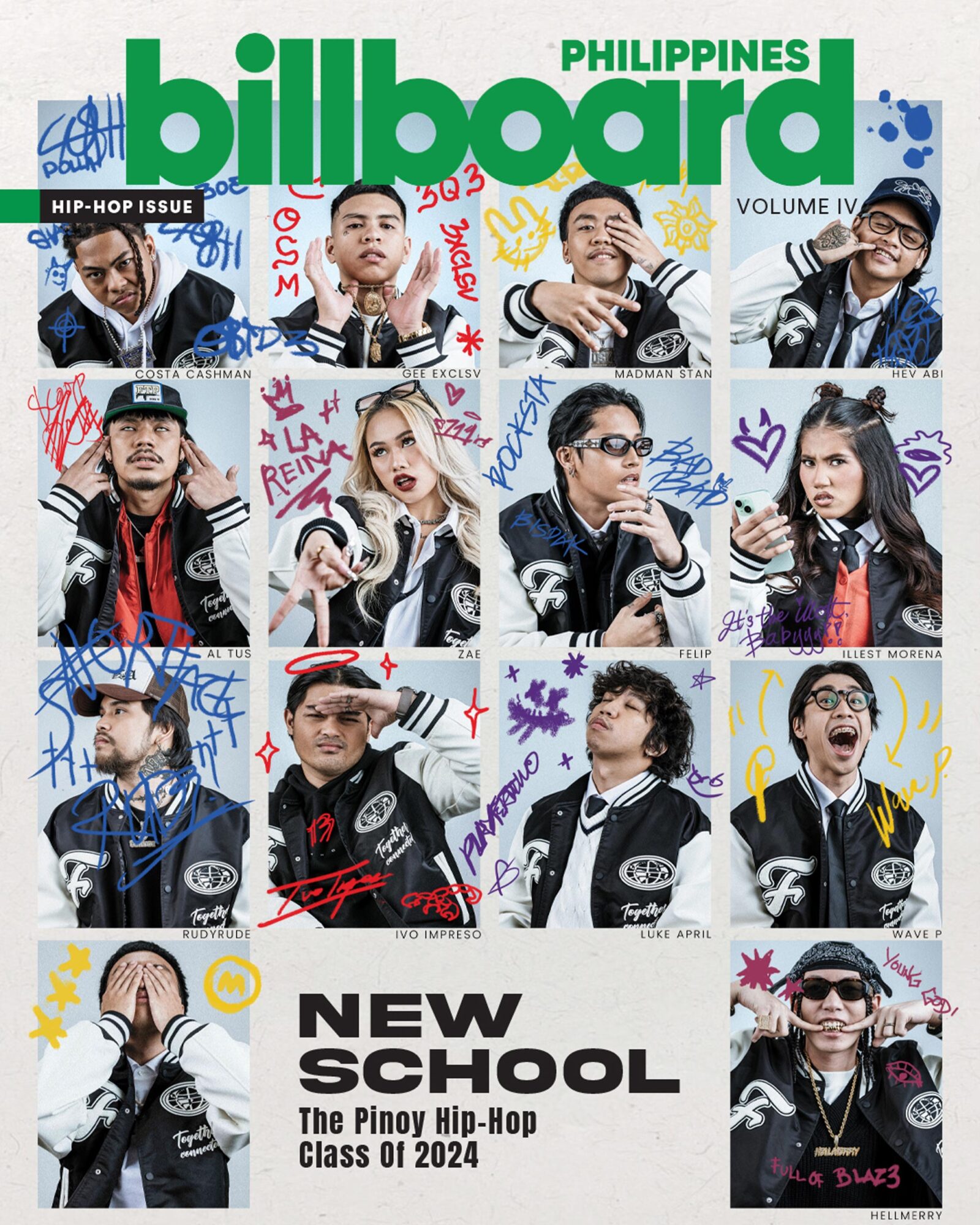Francis M’s incendiary onstage presence set every word ablaze.
He heralded hip-hop as a catalyst for change, carrying a spirit of pride that would inspire Filipinos to the present. Though he’s remembered as the Master Rapper, his music tells a story of reinvention that broke the boundaries of hip-hop, remixing and reconfiguring existing genres and boundaries. Throughout his prolific career, he sought new ways of articulating the national consciousness of the 1990s.
Despite passing away at the age of 44 in 2009, the man christened Francis Michael Durango Magalona and his work have become cornerstones of Filipino popular culture. Countless artists have paid tribute to him up to the present. The Philippine Educational Theater Association’s Three Stars and a Sun (2016) turned his most popular songs into a dystopian science-fiction musical. At the most recent onshore Eraserheads reunion concert in 2022, the band brought a Francis M hologram onstage to perform “Superproxy” with his sons, Elmo and Arkin. That particular appearance was surreal, to say the least, and speaks to how his work has inspired generations of musicians and advocates.
“I discovered and fell in love with rap music because of Francis M,” says Rye Armamento of the renowned ‘90s hip-hop group Sun Valley Crew. “Seeing him on the TV for the first time rapping over just a drum beat on Loveli-Ness back in 1989 made me listen to rap and dive deep into hip-hop.” Few compilations of Francis M’s earliest skits on Loveli-Ness are still online, providing an interesting glimpse into the early era of his career of rapping amidst spandex-clad dancers and Alma Moreno. There was a stark difference between the highly choreographed synthpop dance numbers and the rawness to his rhymes. Even that early on, it was clear to see that he had something to prove.
Francis M recognized the roots of hip-hop in African American resistance against injustice and inequality, taking these sonic conventions and transposing them into a Philippine context. With the building blocks of drum machine beats and the poetic cadence of speech, he experimented with incorporating ethnic instruments and references to Filipino pop culture. He cemented rap as a force for change by tying it back to its political roots.
On “Three Stars and a Sun” — arguably the definitive Francis M manifesto — he says:
Don’t tell me that you understand
It’s been four hundred years of tears
For the brown man
Still and all the fight has just begun
Throughout all the work in his career, it’s clear that he took that fight to heart. “Tayo’y Mga Pinoy” was a rebuttal to how Filipinos internalized insecurities and inferiorities about their origins and appearance. He also spoke up about electioneering and corruption in tracks like “Halalan” (“Dati-rati’y walang pakialam ngayo’y biglang ‘Mahal kong bayan!’ / Nang dahil lamang d’yan sa halalan”). Even in his commercial work like “Ito Ang Gusto Ko,” he advocated for the youth, the environment, and human rights. The responsibility that came with being a public figure is something that he didn’t take for granted.
He also gained the respect of his contemporaries for being a musician who was tireless about pushing his craft. He pulverized the local divide between not just hip-hop and rock, but a whole other slew of genres occupying their own niches in the Philippines. “He liked a lot of experimentation. He listened to a lot of music. He used to sing Frank Sinatra songs,” says Raymund Marasigan. “He was probably one of the first people to have a live rock band (Hardware Syndrome) as his backup band when everyone in hip-hop was doing just backing tracks and DJs. He was very creative. He was up to trying anything in the studio.”
Francis M was a voracious listener of music, referencing the Eraserheads, the funk of The Advisors and Olongapo, The Beatles, and Erykah Badu in his songs. In his sonic laboratory, rap met metal (“Three Stars and a Sun”), funk met rondalla (“1-800-Ninety Six”), and radio hits met prog and free-form jazz (“Nais Ko”). He had the certain skill of switching seamlessly between Filipino and English (“Man from Manila”), acknowledging how Filipino musicians could take on foreign popular music and make it their own.
Yet in other ways, his music was deeply personal, like “Kaleidoscope World.” The music video, directed by filmmaker Raymond Red in 1995, is quintessential ‘90s footage. This was among their collaborative works over the years, including the film Kamada where Francis M shared the bill with Jaclyn Jose. The video featured shots of Francis M roaming around old Manila, and even Red and Magalona’s respective children running around Parks and Wildlife in Quezon City, in a montage of early special effects and youthful abandon.
“In those years, wala naman budgets talaga ang music video, eh,” said Raymond Red. “When we look back on that video, talagang parang very emotional, I have to admit. It’s like a home video for us. Parang talagang nag-enjoy lang kami.”
Underneath Francis M’s intensely heated music was a father hoping for a more peaceful and understanding world for his family. These days, loving the motherland is even more fraught with complexity. Much of his work is rooted in the concerns of his time throughout the ‘90s and the early 2000s, but plenty of issues that he tackled that still persist today. But to create music over the course of two decades takes dedication and perseverance. Perhaps that’s what went hand-in-hand with Francis M’s cause: to use his voice as a megaphone to call for justice and peace.
At present, his music is firmly his personal narrative of the triumphs and struggles of Filipinos, and how, in his eyes, transformative change begins with having something to say.
A version of this story appeared on Billboard Philippines’ Hip-hop Issue, dated April 15.

